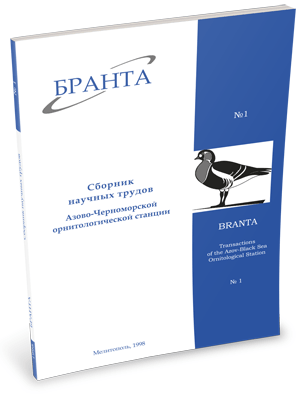
Transactions
of the Azov-Black Sea Ornithological Station



Premigratory gathering of Common Crane on the Central Sivash
Gorlov P.I.
The researches on the Central Sivash (North of the Crimean peninsula) were held during the period 1991-1995. The separate groups of Common Crane stay in the Crimea right after finishing spring migration. At the end of May in the whole north of the Crimean peninsula one can meet small groups to 50 birds. From the mid June the number of birds in the group increases. The flocks of 120-140 birds are rare. In the fir st h a l f of July more than 800 Common Cranes were counted on the Central Sivash. By the mid August the number of birds increases to 1500 inds. The first wave of the migration begins from the mid August and by the end of this month the number of cranes doubles. The maximum number of birds counted on the Central Sivash is 8000 (October, 1993) - 13 000 (the end of October, 1994).
The cranes feed in the harvested cornfields which are located at an average distance of 6-8 km from their sleeping site. In August night and day’s rest lasted 10 hours 29 minutes, feeding - 8 h 07 min, flights - 5 h 24 min. In September the cranes did not have resting period during the day and the night lasted 10 h 47 min, feeding -11 h 52 min, flights -1 h 21 min. In both periods in the middle of the day the groups of soaring birds were observed.
The cranes stayed for the night in the narrow and long bay of the Sivash. In August and September the roosting sites were different. During the hunting it changed. The weather conditions did not have influence on the roosting site of cranes. During the
observations the groups of Common Cranes with different number of birds were met. In August there were about 30 per cent of couples and 25 per cent of groups with 3 and 4 inds. In September an enlargement of flocks was observed.
The frequency of meeting of the groups with 10-50 inds. increases. In August 3 flocks with numbering more than 150 inds. were recorded, in September -11 flocks. The families of young birds appear in the Central Sivash from the middle of August. The main to the gathering threat is the disturbance from hunters.
Read the paper in a PDF file